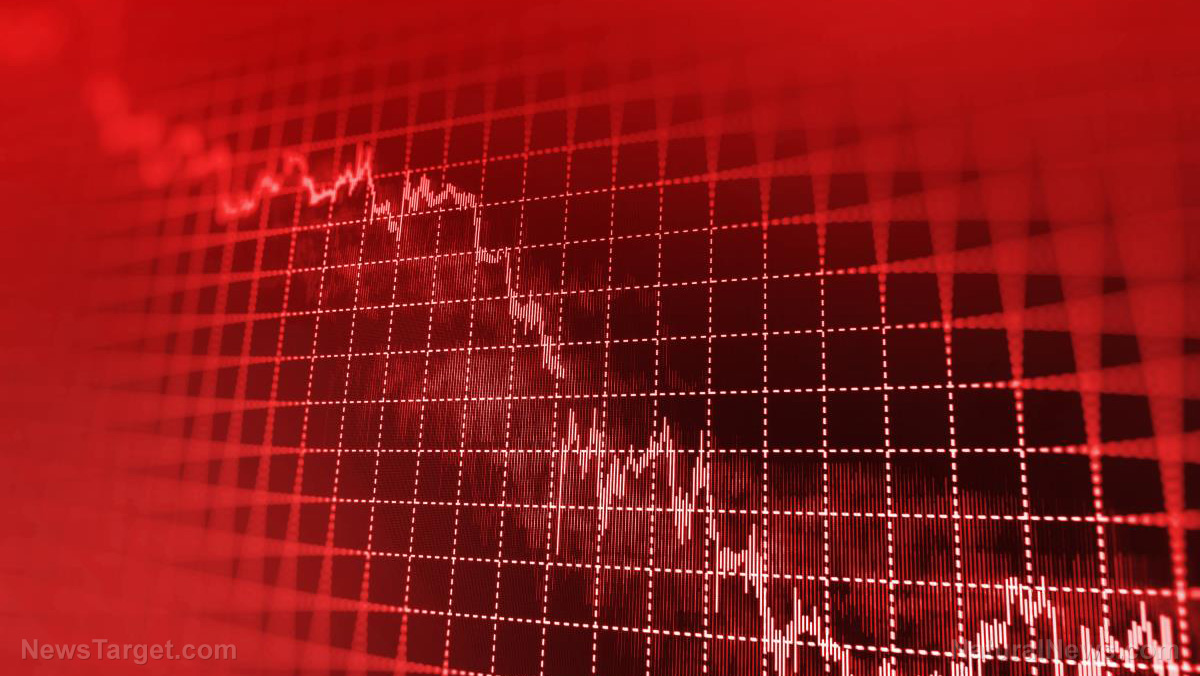
After an initial spike, the value of the dollar has been falling steadily since the pandemic took hold in the U.S. last March. It's down by about 10 to 12 percent relative to the U.S.'s major trading partners, dropping to its weakest levels since early 2018.
The dollar's woes predate the pandemic
There was a time when the value of the U.S. dollar was backed by the country's gold reserves in Fort Knox. But in 1933, then-President Franklin D. Roosevelt took the dollar off the gold standard. This was followed by former president Richard Nixon announcing that the U.S. would no longer convert dollars to gold in 1971.
With the dollar no longer tied to the U.S.'s gold reserves, it now only has value because people believe it has value. It is essentially a product and its value goes up and down according to how much supply and demand there is for it. (Related: Many states already recognize gold and silver as legal currency, which will come in handy once fiat currency crashes.)
This is why financial markets exist, centered on New York City's Wall Street, London's Bond Street and other financial centers worldwide. The trading of dollars and other currencies in these helps give them their value.
For a time, the dollar was the strongest currency because America had the strongest economy. Following the Second World War, the U.S. was the only major global economy left standing. This led to the dollar becoming the world's currency and the currency of international trade.
But things have changed since then. The other countries involved in the war have rebuilt – often with U.S. aid – and their economies have followed suit. Today, some of those countries are America's biggest trading partners.
When the E.U. was formed in 1993, one of its main goals was to create a joint economy that would allow the countries involved to better compete in the global market. The bloc's joint economy has become the third-largest in the world, behind the U.S. and China. Although the E.U.'s GDP is still about 40 percent lower than the U.S., they're working to close that gap.
Beyond the growth of other economies, a number of countries are also signing agreements to trade in their national currencies circumventing the dollar. China and Russia have already signed an agreement to trade in their national currencies. In addition, China has also signed a similar agreement with Japan.
Called "de-dollarization," this process of moving away from the dollar is seen as weakening the U.S.'s financial position. It's causing America to lose its advantage of having other countries need its currency to do business. This is something that's helped prop up the dollar's value since the end of the Second World War.
Pandemic response weakening the dollar further
Despite the factors allayed against it, the dollar had shown signs of strength for the past nine years. Indeed, when the pandemic hit, the dollar actually rallied to a new high for the year in March 2020 as investors looked to hedge their portfolios in what was seen as a financial safe haven.
But since its peak in March, the dollar has been on a steady downward trajectory against the various currencies comprising the U.S.'s main trading partners.
The main driver of this latest plunge is the trillions of dollars that the Fed has pumped into the U.S. economy to continue to prop it up in the face of quarantines and shutdowns.
A grim outlook for U.S. growth, which shrank by an annualized rate of 31.7 percent in the second quarter of 2020 – when the pandemic took hold in the country, combined with the Fed's near-zero rate policy also pushed down government bond yields last year. This made U.S. dollar-denominated debt less attractive for investors abroad.
Complicating this further is the Fed's new "average inflation" targeting regime. When current account deficits are under pressure, the central bank can usually be counted to come to the rescue by tightening monetary policy. But that is not the case with this new regime where the Fed is signaling that it will move later rather than sooner to counter inflation rates.
This has the effect of eating into domestic savings as American's are forced to spend more. This shortfall of domestic savings is leaving the U.S. increasingly reliant on foreign capital to compensate. With the Fed's open-ended quantitative easing creating a massive overhang of excess liquidity, the case is made for further weakening of the dollar.
Making this worse is a still-raging pandemic and an economy teetering on the edge of a double-dip recession. This has led to the Biden administration opting for another round of massive fiscal relief, which in the long run, further weakens the dollar.
Follow Risk.news for more on the problems facing the dollar in the near future.
Sources include:
Please contact us for more information.























